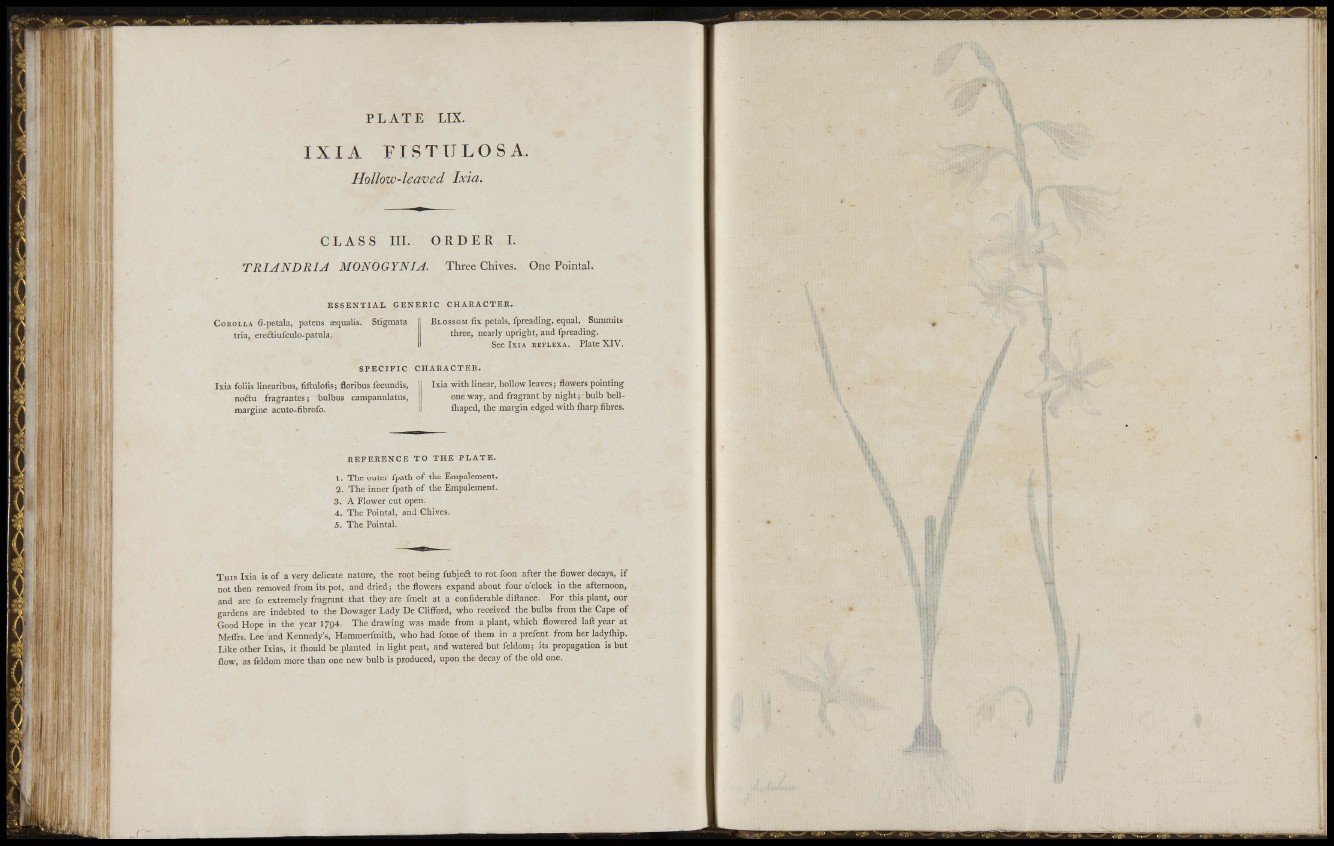
• • - ,&i¡ I TWi il i!ii I - ¡.i«:;«
I
' ' SI 'i•
.lli
i h s
P L A T E LIX.
I X I A FISTULOSA.
Hollow-leaved Ixia.
C L A S S in. ORDER L
TRIJNDRIJ MONOGYNIA. Three Chives. One Pomtal.
E S S E N T I A L GENERIC CHAEACTEK.
C O R O L L A 6-petala, patens eequalis. Stigmata
tria, ereétiufculo-patula.
BLOSSOM fix petals, fpreading, equal. Summits
three, nearly upright, and fpreading.
See IXI A KEFLEXA. Plate X IV.
S P E C I F I C CHARACTER.
Ixia foliis linearibiis, fiftulofis; floribus fecundis,
noÉtu fragrantés; bulbus campanulatus,
margine acuto-fibrofo.
Ixia with linear, hollow leaves; flowers pointing
oneway, and fragrant by night;' bulb belllliaped,
the margin edged with lharp fibres.
R E F E R E N C E TO THE PLATE.
1. The outer fpath of the Empalement.
2. Thé inner fpath of the Empalement.
3. A Flower cut open.
4. The Pointai, and Chives.
5. The Pointai.
T H I S Ixia is of a very delicate nature, the root being fubjeft to rot foon after the flower decays, if
not then removed from its pot, and dried; the flowers expand about four o'clock in the afternoon,
and are fo extremely fragrant that they are fmelt at a confiderable diftance. For this plant, our
gardens are indebted to the Dowager Lady De Clifford, who received the bulbs from the Cape of
Good Hope in the year 1794, The drawing was made from a plant, which flowered laft year at
Meffrs. Lee and Kennedy's, Hammerfmith, who had forae of them in a prefent from her ladyfliip.
Like other Ixias, it ihould be planted in light peat, and watered but feldom; its propagation is but
flow, as feldom more than one new bulb is produced, upon the decay of the old one.
m
• i'
í ä' • I
f